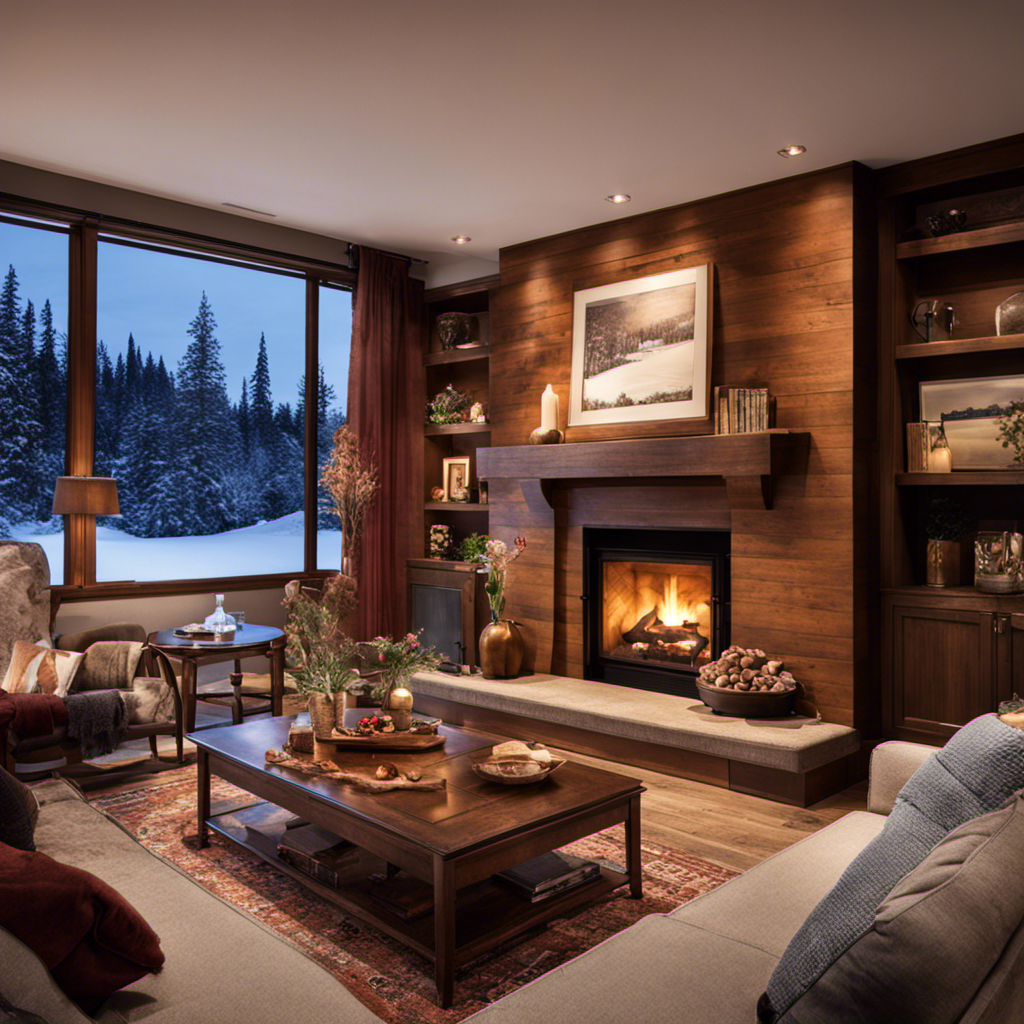In this article, we will explore the optimal temperature for cost-effective heating during the winter season.
By understanding the impact of temperature on energy consumption and considering factors such as comfort and savings, we can make informed decisions about keeping our homes warm while minimizing expenses.
With practical tips and strategies, we aim to serve our audience in optimizing their heating systems’ efficiency and reducing energy bills.
Discover the cheapest temperature to maintain a comfortable and economical indoor environment this winter.
Key Takeaways
- Setting the thermostat a few degrees lower in winter can result in substantial energy savings.
- The recommended temperature range for cost savings is between 68 and 72 degrees Fahrenheit.
- Proper insulation and weatherproofing techniques reduce heat loss and improve energy efficiency.
- Implementing energy-saving thermostat settings, insulation, and utilizing natural sunlight can optimize comfort and savings.
The Impact of Temperature on Energy Consumption
The temperature at which you set your thermostat can significantly affect the amount of energy consumed by your household. By implementing energy-saving thermostat settings and utilizing insulation and weatherproofing techniques, you can optimize energy efficiency and reduce costs.
Energy-saving thermostat settings allow you to maintain a comfortable temperature while minimizing energy consumption. Lowering the thermostat by just a few degrees during winter can result in substantial energy savings.
Additionally, proper insulation and weatherproofing techniques help prevent heat loss, keeping your home warmer for longer periods without relying heavily on heating systems. Insulating your walls, attic, and windows, as well as sealing any gaps or cracks, can greatly reduce heat transfer and improve energy efficiency.
Factors to Consider When Choosing the Right Temperature
Several factors should be considered when choosing the right temperature for your house in winter.
One of the most important factors is the effectiveness of your insulation. Proper insulation helps prevent heat loss, reducing the amount of energy required to maintain a comfortable temperature. Assess your insulation to ensure it is in good condition and adequately insulating your home.
Another factor to consider is the type of heating options available to you. Different heating systems have varying efficiency levels and energy requirements. It is important to choose a heating option that is both cost-effective and environmentally friendly.
Additionally, factors such as personal comfort preferences, the number of occupants in the house, and the climate in your region should also be taken into account when deciding the ideal temperature for your home in winter.
The Recommended Temperature Range for Cost Savings
Optimal cost savings can be achieved by maintaining your house in winter at a temperature range between 68 and 72 degrees Fahrenheit. These ideal thermostat settings strike a balance between comfort and energy efficiency, allowing you to stay warm while keeping your energy bills in check. By keeping your house within this recommended temperature range, you can avoid excessive energy consumption and reduce your heating costs.
To further maximize your cost savings, consider investing in energy efficient heating options. Upgrading to a programmable thermostat can help you regulate the temperature more effectively, allowing you to reduce heat usage when you’re not at home. Additionally, proper insulation and sealing of windows and doors can prevent heat loss, ensuring that your home stays warm without wasting energy.
Understanding the Trade-Off Between Comfort and Savings
Many homeowners struggle to find the right balance between comfort and savings when deciding on the ideal temperature to keep their house in winter. It is important to consider not only the financial aspect but also the psychological benefits of a warm home.
While lowering the thermostat can result in cost savings, it may also lead to discomfort and negatively impact well-being. To maintain a comfortable temperature without increasing energy consumption, there are several strategies that can be employed.
Firstly, properly insulating the house can prevent heat loss and retain warmth. Additionally, using programmable thermostats can help regulate temperature settings based on occupancy patterns.
Lastly, utilizing natural sunlight by opening curtains during the day can provide warmth and reduce the need for artificial heating.
Tips for Optimizing Your Heating System’s Efficiency
To enhance the efficiency of your heating system, consider implementing a few key strategies.
One important step is to maximize insulation in your home. Proper insulation helps to prevent heat loss and keeps your home warm without overburdening your heating system. Insulate your walls, attic, and windows to create a barrier against the cold air outside.
Another effective strategy is to install programmable thermostats. These thermostats allow you to set different temperatures for different times of the day, ensuring that your heating system is not working unnecessarily when you are away or asleep. By programming your thermostat to lower the temperature during times when you don’t need as much heat, you can save energy and reduce your heating costs.
Implementing these strategies can significantly improve the efficiency of your heating system and help you save money in the long run.
Additional Strategies to Keep Your Energy Bills Low in Winter
During the winter season, you can further reduce your energy bills by implementing additional cost-saving strategies.
One effective strategy is to invest in a smart thermostat. A smart thermostat allows you to easily control the temperature of your home, even when you’re not there. You can program it to lower the temperature when you’re away and raise it when you’re about to return. This helps to optimize energy usage and save money.
Another strategy is to improve your home’s insulation. By sealing any air leaks and adding insulation to walls, floors, and attics, you can prevent heat from escaping and cold air from entering your home. This will reduce the need for excessive heating and result in lower energy bills.
Frequently Asked Questions
How Often Should I Adjust the Temperature in My House During Winter?
To optimize energy consumption during winter, it is recommended to adjust the temperature in your house based on your comfort level and the outside weather conditions. Regularly monitoring and adjusting the temperature can help maintain a balance between comfort and cost-effectiveness.
Are There Any Specific Types of Heating Systems That Are More Cost-Effective Than Others?
Cost effective heating options and energy efficient heating systems can help reduce energy consumption and save money. By choosing the right heating system, homeowners can optimize their energy usage and minimize costs without sacrificing comfort.
Can Insulation Affect the Cost Savings of Maintaining a Lower Temperature in Winter?
Insulation plays a crucial role in the cost savings of maintaining a lower temperature in winter. By properly insulating your house, you can benefit from increased energy efficiency, reducing the amount of heat lost and lowering your overall heating expenses.
Are There Any Government Programs or Incentives Available for Energy-Efficient Heating Systems?
There are various government programs and incentives available for energy-efficient heating systems. These programs often include tax credits and are designed to encourage the use of environmentally-friendly heating technologies while reducing energy consumption and costs.
How Do the Outdoor Weather Conditions Impact the Recommended Temperature Range for Cost Savings?
The recommended temperature range for cost savings is influenced by outdoor weather conditions. Indoor humidity levels can impact heating costs, while window coverings play a role in maintaining temperature. Considering these factors can help optimize energy efficiency and reduce expenses.


